CHOBE-ZAMBEZI Floodplains
INTRODUCTION
The Chobe-Zambezi floodplain area is made up of six communal conservancies – Salambala, Lusese, Nakabolelwa, Impalila Island, Kabulabula and Kasika.
During the period when the Zambezi river is in full flood the river overflows its banks and flows into small rivers and then floods the area in general. The flood plains are relatively flat and so once the water has moved into the flood plains it covers huge areas of land very quickly. When the small flood recede it leaves behind pans and marshes that stand sometimes until the following years flood. This is wonderful for animals, both wild and domestic, and some really amazing birdlife can be seen in the dry months.
Visiting these areas in flood time, offers visitors to the Zambezi the rare and special privilege of seeing Nature at work, rejuvenating, replenishing and recreating.
We are in the heart of KAZA, the Kavango Zambezi Transfrontier Conservation Area. Larger than Germany and Austria combined, KAZA encompasses over 50 protected areas in five countries – Angola, Botswana, Zambia, Zimbabwe and Namibia – and communal conservancies are an important part of this ecological and cultural mosaic.
In traditional villages and at craft markets, you can discover the beauty of music, dance, weaving and art that is an essential part of the North East and you can experience all the wonder and vibrancy that comes with living at this crossroads of African culture.
The catchment areas of the Zambezi is in Angola & Zambia and the rainy season begins in December and lasts until middle or end of March. The flood size varies every year and occasionally there is no flood. The highest level of the Zambezi River recorded in Katima Mulilo was 8m15 in 2009, the lowest 2m39 in 2019.
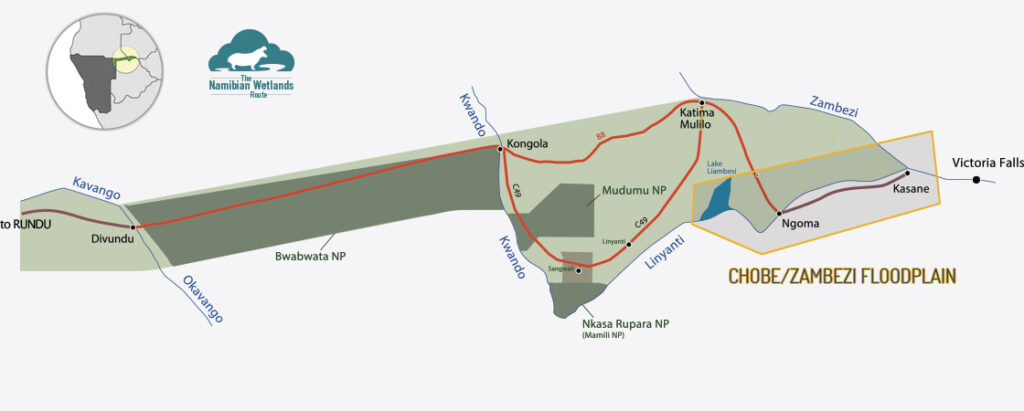
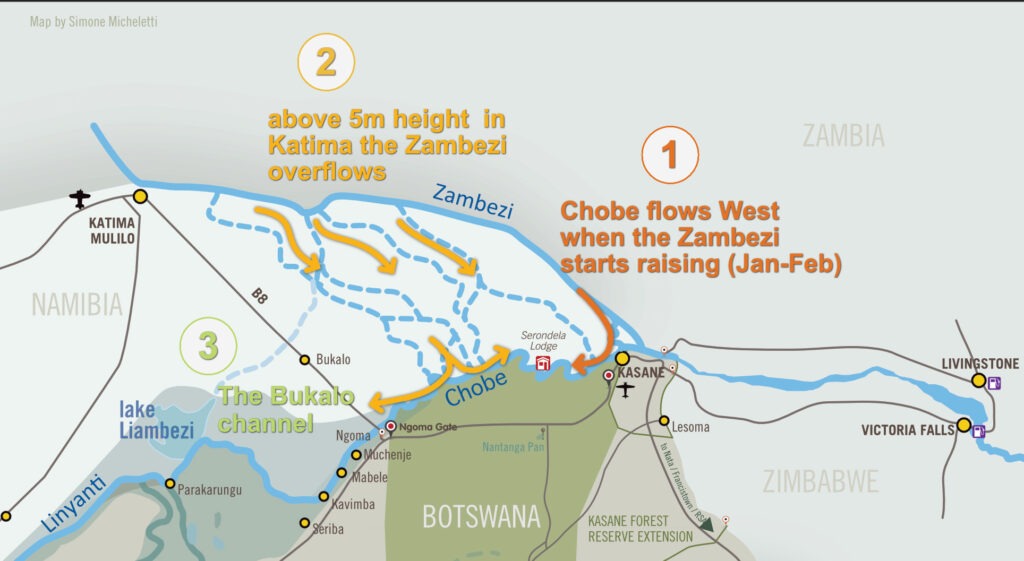
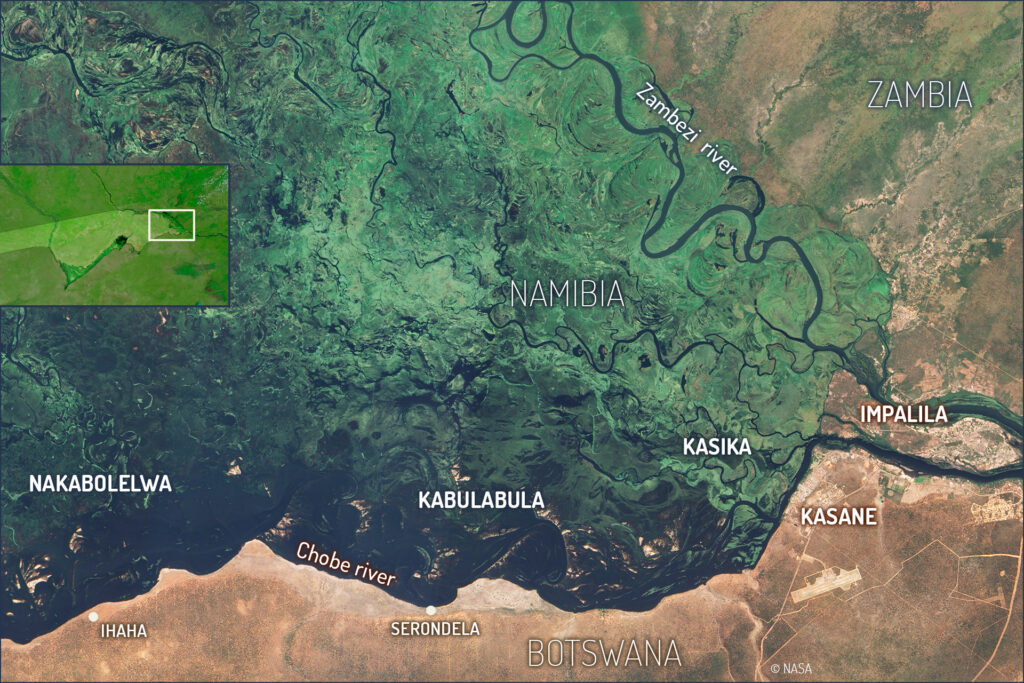
THE CHOBE RIVER
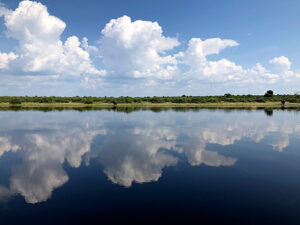
The river begins as a small mountain spring in Angola on the slopes of Mount Tembo, where it is known as the Cuando, only when it enters Namibia is called Kwando. From here, it flows South through the Kalahari sands before it reaches the Linyanti fault (an extensions of the Great Rift Valley) and after forming beautiful swamps it’s named Linyanti. It becomes Chobe only after the area known as Liambezi, where a lake forms in very high flooded season. From here is flows East wards until meeting the mighty Zambezi at Impalila Island.
This section of the river attracts an almost unbelievable density of game, including huge herds of elephant (which can often be seen crossing the river) and buffalo, as well as countless hippos and crocodiles. The birdlife is extraordinary too, particularly in the wetter summer months. The wide banks and lush grass attract rare antelope such as red lechwe and puku to the water’s edge. The river is also home to over 90 species of fish.
IMPALILA ISLAND
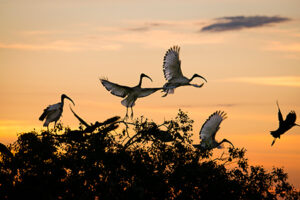
Impalila Island is the ‘far away place’, a small island nestled in the furthest corner of the Zambezi Region in north-eastern Namibia. It is a small conservancy, covering less than a hundred square kilometres, and embraces around 2,000 residents, most of whom speak Subiya, as well as the area’s lingua franca, Lozi. The original inclusion of the finger-like “Caprivi strip” into Namibia was agreed in the late 19th century by European colonial powers at the ‘Berlin Conference’ to allow the German colony access to the Zambezi River. The narrow strip is surrounded by Angola and Zambia to the North, Zimbabwe to east and Botswana to the south. The borders were drawn without following any cultural divisions and separated people with a common heritage into different nations. During the South African administration of Namibia, people were moved off Impalila Island to create a reserve, but a few families returned during the floods of the late 1950s and remained.
The Impalila community began the process to register as a conservancy together with the neighbouring Kasika community, originally intending to register as one conservancy. After a lengthy process, it was decided to form two conservancies, which were registered in December 2005.
The conservancy itself offers cultural tours that include village visits and cultural performances, as well as fishing trips and dugout canoe rides. The guiding provides great opportunities for visitors to explore the island and make the most of the superb birding and angling. This is an important source of income for the local guides, while the cultural tours also generate income for the villages and craft producers.
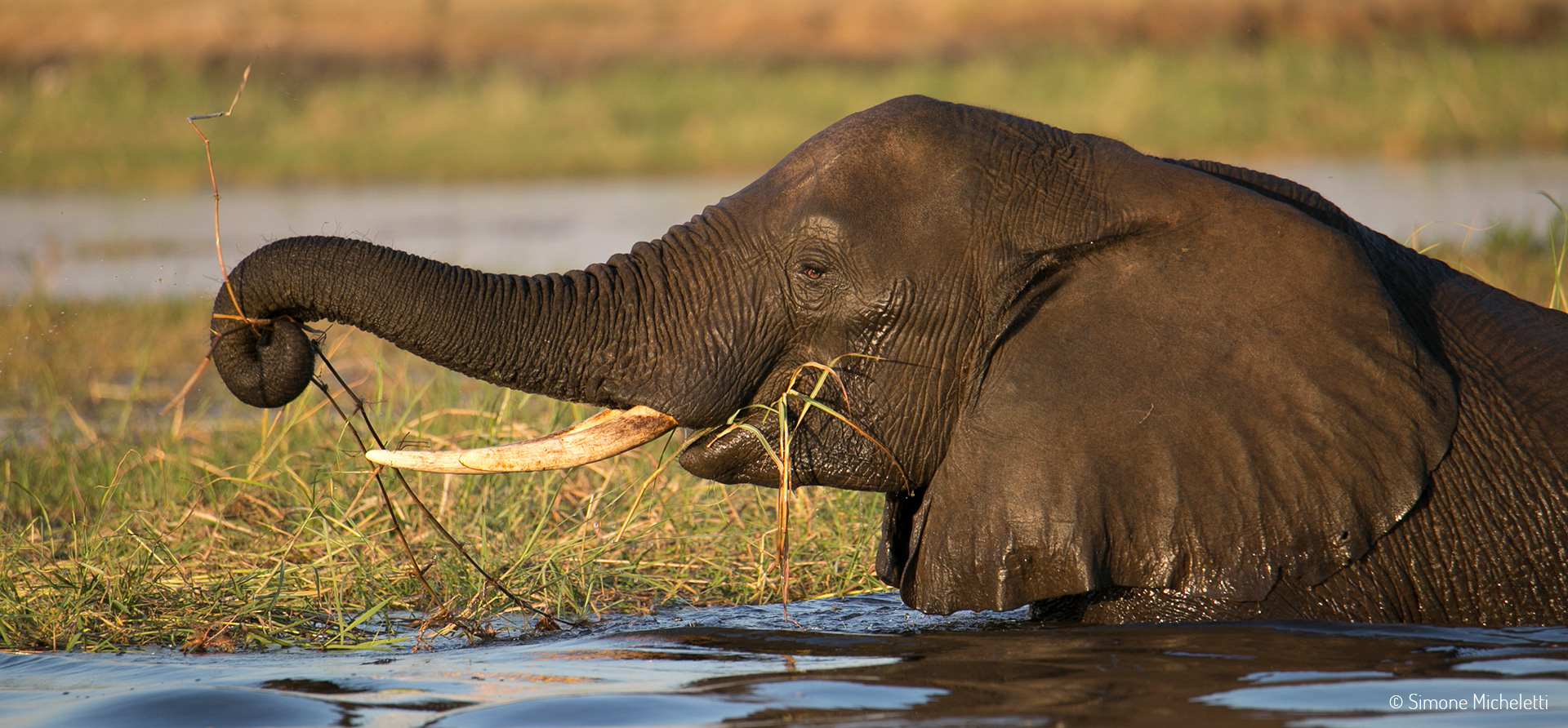
The Conservancies in these area
The Ministry of Environment and Tourism’s conservation vision for Zambezi Region is an impressive plan that outlines its commitment to community consultation, joint venture partnerships and equity in its efforts to achieve conservation and development goals for the region. The region has now embarked on tourism, not as an alternative to traditional livelihoods, but as an additional income source and job creator. Through tourism, people are maintaining their culture because that’s what they can sell to tourists in exchange for money.
Conservancies are established within the region to integrate traditional livelihoods with conservation and tourism. This helps optimise benefits for the community. Furthermore the establishment of conservancies led to the development of two tourism plans: the Tourism Development Plan for the eastern floodplain and the Kwando/Linyanti Tourism Development Plan.
Salambala Conservancy
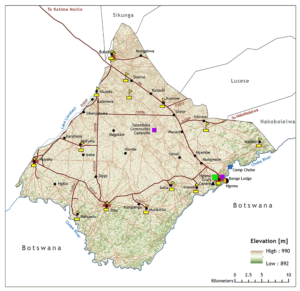
Named after the lovers Sala and Bala whose illicit relationship resulted in them being banished to the forest
Registered: June 1998
Area: 930 km2
Approximate population: 8,923
Geographical features: Average annual rainfall of 600 mm. Mopane woodland dominates the northern area, while floodplain grasslands cover the southern section.
Particular features:
High diversity of bird species, including many that are rare elsewhere in Namibia; strategic location opposite Botswana’s Chobe National Park.
Major wildlife resources:
Lion, elephant, leopard, buffalo, waterbuck, tsessebe, kudu, duiker, reedbuck, common impala, blue wildebeest, lechwe, hippo, crocodile, plains zebra, warthog, steenbok, interesting bird life, various fish species.
Lusese Conservancy
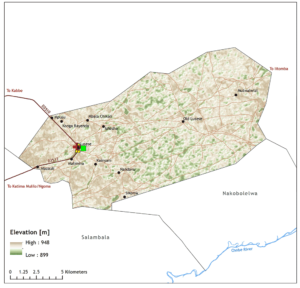 Quick facts
Quick facts
Registered: October 2014
Area: 207 km2
Approximate population: 2000
Balyerwa Conservancy
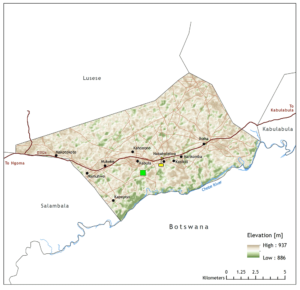 Quick facts
Quick facts
Registered: October 2014
Area: 114 km2
Approximate population: 800
Kabulabula Conservancy
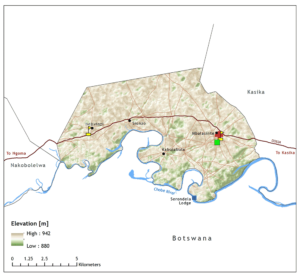 Quick facts
Quick facts
Registered: November 2011
Area: 89 km2
Approximate population: 500
Kasika Conservancy
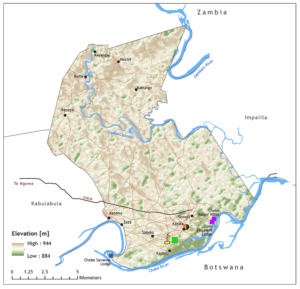
Quick facts
Registered: October 2005
Area: 147 km2
Approximate population: 1100
Geographical features:
Average annual rainfall of over 600 mm. Floodplain area between Chobe and Zambezi Rivers.
Particular features:
Close to Chobe and Zambezi Rivers, with water visible throughout the year. Borders Chobe National Park in Botswana.
Major wildlife resources:
Elephant, buffalo, crocodile, hippo, lechwe, sitatunga, waterbuck, interesting bird life, tiger fish, catfish, various tilapia fish species.
Impalila Conservancy
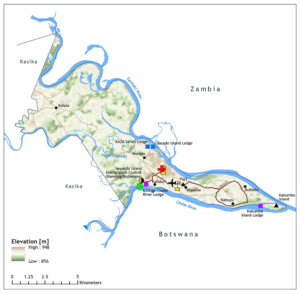 Quick facts
Quick facts
Registered: December 2005
Region: Zambezi
Area: 73 km2
Approximate population: 968
Geographical features:
The island is bounded by the Zambezi and Chobe Rivers. Average annual rainfall is over 600 mm.
Particular features:
Prominent baobab tree from which people can view four countries bordering each other.
Major wildlife resources:
Elephant, buffalo, crocodile, hippo, waterbuck, common impala, lechwe, sitatunga, warthog,bbushbuck, interesting bird life, tiger fish, catfish, various tilapia fish species.